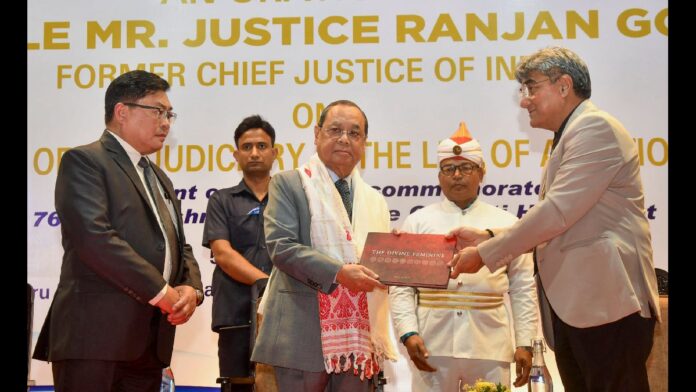The Guwahati High Court has expressed concerns about the traffic police’s e-challan system, claiming that it is in violation of existing laws and regulations. This is an essential legal step. This challenge draws attention to problems with the legislative framework that controls the usage of electronic challans and traffic management.
The e-challan system was introduced by the traffic police in Guwahati to streamline traffic enforcement and improve compliance with traffic regulations. The system allows for the issuance of electronic tickets for traffic violations, which are intended to be more efficient and transparent compared to traditional paper challans.
The primary goals of the e-challan system include reducing paperwork, enhancing accuracy in recording violations, and simplifying the payment process for fines. By leveraging technology, the system aims to improve the overall effectiveness of traffic management and enforcement.
Guwahati High Court’s Challenge
The Guwahati High Court’s challenge to the e-challan system centers on several key issues:
- Violation of Rules: The court has questioned whether the implementation of the e-challan system adheres to the prescribed legal and procedural rules. There are concerns that the system may not fully comply with the guidelines set forth by traffic regulations and judicial precedents.
- Procedural Irregularities: The court has raised issues regarding procedural irregularities in the issuance and processing of e-challans. These irregularities may include discrepancies in recording violations, improper handling of evidence, and inconsistencies in the application of fines.
- Legal Validity: The challenge also involves scrutinizing the legal validity of the e-challan system. The court is examining whether the system’s operational framework and enforcement mechanisms are legally sound and conform to statutory requirements.
- Impact on Citizens: There are concerns about the potential impact of the e-challan system on citizens, particularly regarding fairness and transparency. The court is considering whether the system adequately protects the rights of individuals and provides a fair process for contesting violations.
Implications for Traffic Management
The court’s challenge to the e-challan system has significant implications for traffic management in Guwahati:
- Review and Reform: If the court finds merit in the challenge, it may lead to a review and reform of the e-challan system. This could involve making necessary adjustments to ensure compliance with legal standards and addressing any identified irregularities.
- Impact on Enforcement: The challenge may also affect the enforcement of traffic regulations. If the e-challan system is found to be non-compliant, there could be a temporary halt in its use until necessary changes are implemented.
- Public Confidence: The legal challenge underscores the importance of maintaining public confidence in traffic enforcement systems. Ensuring that the e-challan system operates transparently and fairly is crucial for upholding trust and accountability.
In response to the court’s challenge, the traffic police and relevant authorities are likely to take steps to address the court’s concerns. This may include providing detailed explanations of the system’s compliance with legal requirements and making any necessary adjustments to improve its operation.
Legal experts and advocacy groups are also closely monitoring the case, as its outcome could set important precedents for the use of technology in traffic management and law enforcement.
The Guwahati High Court’s challenge to the e-challan system issued by the traffic police raises important questions about the legality and effectiveness of electronic traffic enforcement. As the court reviews the system’s compliance with rules and procedures, the potential for reforms and improvements in traffic management stays important. The case highlights the need for robust legal and procedural frameworks to ensure that technological solutions in law enforcement are both effective and fair.




